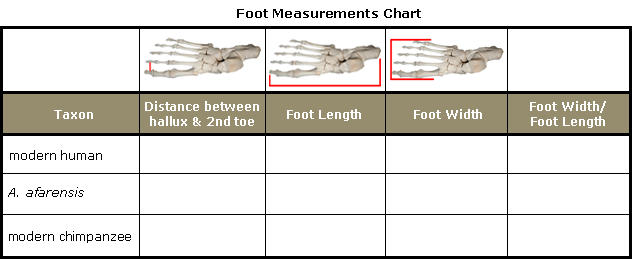Foot Measurements: Determine whether A. afarensis had feet that more closely resembled modern humans or modern chimpanzees. (Remember that the primitive, or earliest, condition is expected to be more like that of a modern chimpanzee).
In this section of the activity, you will take three measurements: the distance between the hallux (big toe) and the second toe, foot length (the length from the tip of the longest toe to the back of the heel), and foot width (the widest part of the foot usually around the toe area). Scaled illustrations of a chimpanzee foot and an A. afarensis footprint from Laetoli are provided below.


- Did A. afarensis have a divergent big toe?
- Did A. afarensis have a derived foot similar to modern humans, or a primitive foot more like that of an extant chimpanzee? Give a reason for your answer.
eFossils is a collaborative website in which users can explore important fossil localities and browse the fossil digital library. If you have any problems using this site or have any other questions, please feel free to contact us.
Funding for eFossils was provided by the Longhorn Innovation Fund for Technology (LIFT) Award from the Research & Educational Technology Committee (R&E) of the IT governance structure at The University of Texas at Austin.
